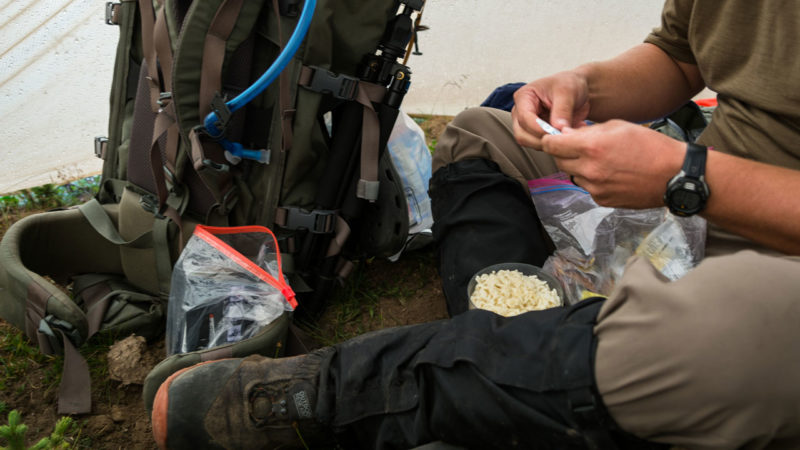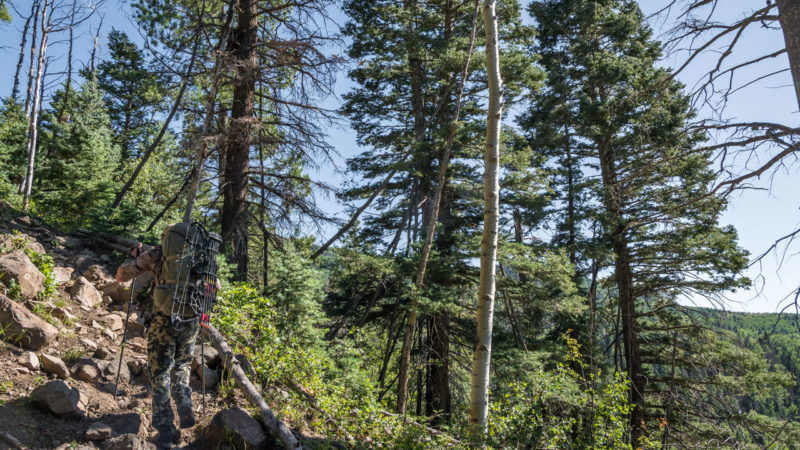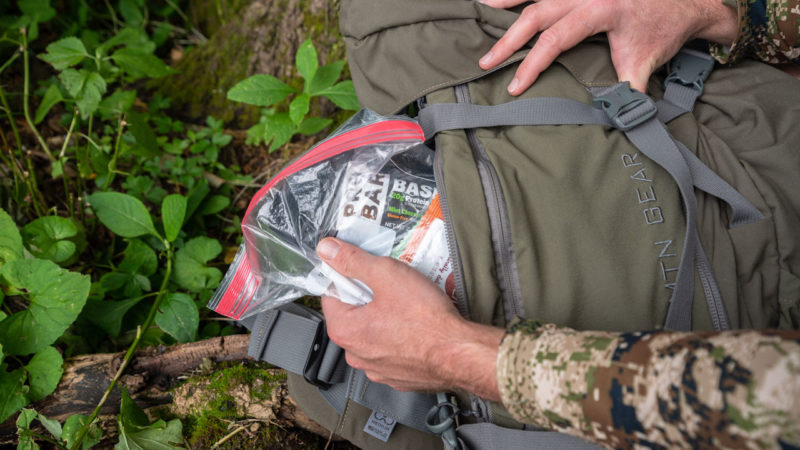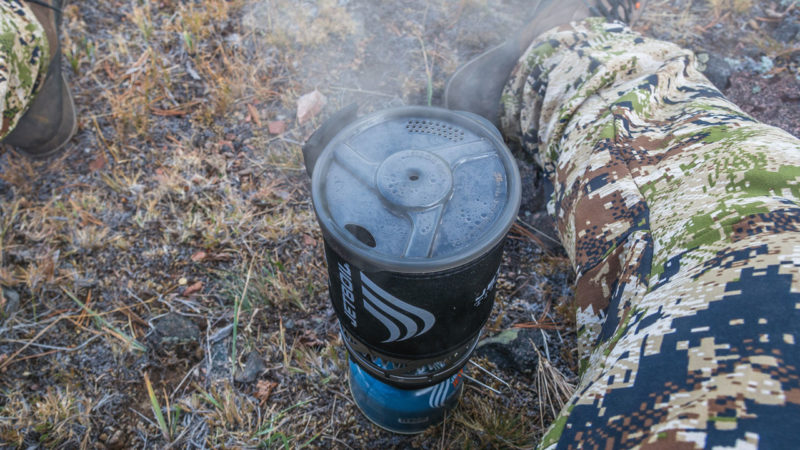If you’ve spent time on a backcountry hunt, you know having the right food in your pack can make or break your experience. So it’s a good idea to spend a considerable amount of time planning out your food for your backcountry hunt well before you leave for the trip.
You’re going to have enough to worry about once you reach the trailhead. The last thing you need is to be worrying about if you packed enough food or food you won’t get tired of eating before the end of the week. Especially when nutrition and maintaining your energy is so critical to an enjoyable backcountry experience.
To make things easier as you prepare for your fall hunts, here’s a closer look at how to plan meals for backcountry hunting.

Backcountry hunting is an endurance event that requires you to sustain your energy level day-after-day. To meet those demands, you have to choose wisely when picking foods for your trip. Choosing your foods might seem easy, but you can’t just toss a jar of peanut butter, sandwiches, and chips in your pack for the week. You need to pack relatively light, calorie-dense snacks and meals.
There are numerous backpacking foods you can buy from places like REI or even most local grocery stores. But it can be hit or miss on finding food you’re not going to get tired of eating day after day. A lot of guys, including myself, fight a loss of appetite when in the high country.
It’s important you try out snacks and backpacking meals you can tolerate eating for a week. It doesn’t do any good to have a backpack full of granola bars you can’t force yourself to eat after a day or two because they taste like dirt. Never hit the trail with food you haven’t sampled before the hunt.
I spent hours before my first few backcountry hunts reading and listening to dozens of articles and podcasts about backcountry nutrition. After those first few years gaining my own experience, I started to realize there isn’t a one-size-fits-all backcountry nutrition plan that is going to work for everyone.
The best thing to do is to apply a couple basic principles, then pack foods you know you won’t get tired of after a couple of days. Most people will want to pack 2500-4000 calories depending on your typical diet and size.

If you’re on a slower-paced, early season mule deer hunt where a lot of time is spent glassing, you might add some hot oatmeal in the morning. You can dehydrate your own meals, or there are numerous companies that sell freeze-dried meals. Some people try to save weight and time by sticking to only foods that don’t have to be heated. I do not recommend this unless you have a lot of experience in the backcountry. A hot meal or cup of coffee can be the difference between keeping your mind on the hunt and talking yourself off the mountain early.
For me, I’ve found 3,000 calories is a pretty good number for a typical day of elk hunting. I may increase that to 3,500 calories on pack-in and pack-out days. I’m sure I’m still at a calorie deficit each day, but even with food I like I’ve learned I can’t eat more than that. If you’re going on a pretty active backcountry hunt, like a September elk hunt, I would stick to one hot meal a day.
I’ve put together an example of what a daily meal plan for a backcountry hunt would look like for me. The specific foods you choose may vary a lot from what you’ll see below. Remember, choose foods you have already tested and know you like.
If you’re trying snacks or meals for the first time while on your hunt, chances are you end up carrying around a bunch of food you never eat. Now you’re carrying extra weight and have an even greater calorie deficit each day. This meal plan is for a September backcountry elk hunt where we will be breaking camp each day before daylight and stopping to set up camp around dark.
I also recommend keeping a separate zip-loc with all of your food for each day. This can help ensure you’re not going through your food too fast or help remind you that you need to be eating more.

I start the day with some sort of protein bar that I can eat quickly as we hit the trail. I eat a more substantial “breakfast” once getting to our high spot where we can listen for bugles or glass. A mid-morning break is also a great time to warm up some hot chocolate or coffee if you have time.
My hot meal of the day is usually for dinner once we get back to camp for the night. If I haven’t had time for any coffee or hot chocolate, I will usually warm up some after dinner. In addition to my daily zip-loc of food, I always keep a couple of energy gel packs or gummy bears in a pocket for a quick burst of energy when I’m starting to get fatigued.

Daily Meal Plan
Backcountry Meal Plan | Food | Calories |
Early-Morning Snack | ProBar Base Bar | 280 |
Mid-morning Snack | Honey Stinger Waffle (140 cal) + Almond Butter (210) | 350 |
Late-morning Snack | Trail Mix (Almonds, Cashews, Cranberries, M&Ms, Pretzels) | 260 |
Lunch | ProBar Meal Bar (390)+Trail Mix (260) | 650 |
Afternoon Snack | Bobo’s Oat Bar or Oatmega Cookie | 340 |
Late Afternoon Snack | Honey Stinger Waffle (140) + Almond Butter (210) | 350 |
Supper | Homemade dehydrated meal or Freeze-dried meal (Mountain House, Backpacker’s Pantry, etc.) | ~400-700 |
Dessert | Hot Chocolate | 150 |
Conclusion
Proper planning of your backcountry meals can make or break your performance while on the hunt. The good things is, it is within your control. There should be no surprises here. The key is to eliminate all uncertainties before you ever leave the house.
Take the steps to ensure you stay fueled for the hunt with a meal plan like what we’ve discussed above and you’ll be ahead of the game when it comes to backcountry nourishment.
Eat right, hunt hard, and enjoy the journey.

 By
By 



